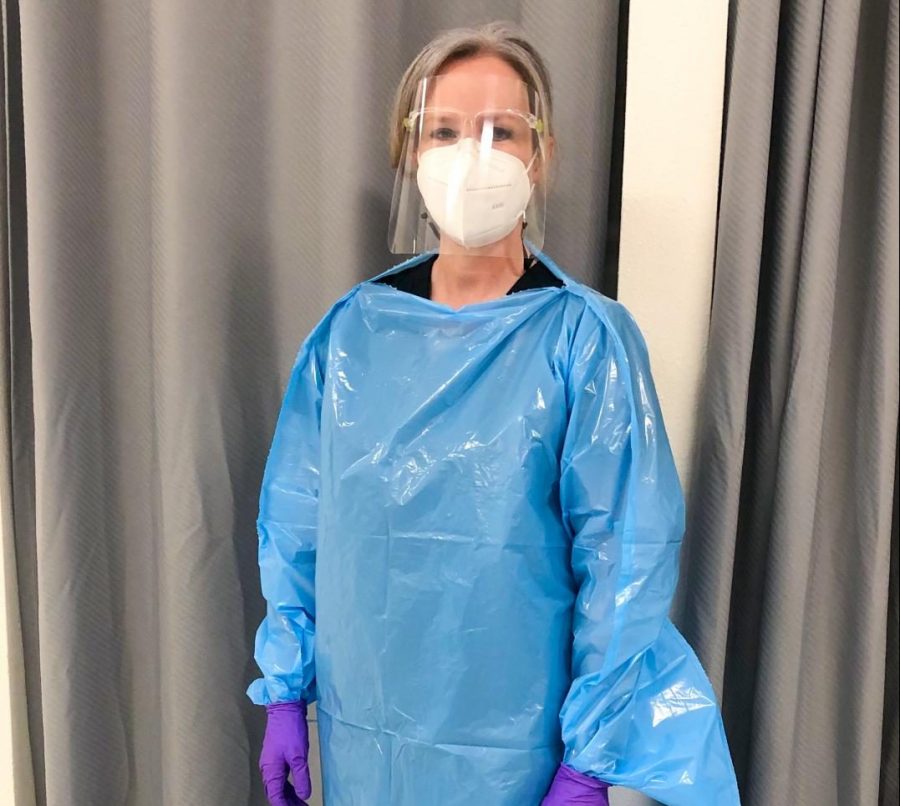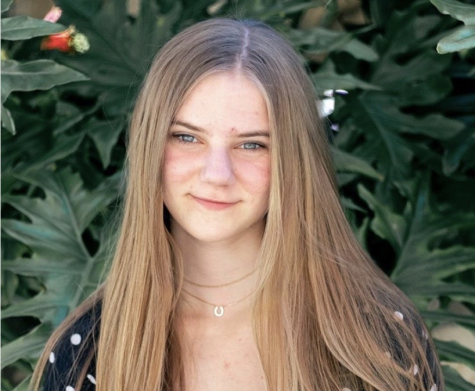School nurse fights on frontline
Vandegrift school nurse Jamie Ennis poses in her office wearing all of her protective gear.
December 11, 2020
When Jamie Ennis began her first day as Vandegrift’s school nurse, she never imagined that seven years later she would be spending her days in an N95 mask, face shield, disposable gown and gloves, fighting a pandemic in school.
“I love [my job], this year is hard. I am missing the students and my coworkers,” Ennis said. “It’s a little lonely being in the ‘sick’ clinic all day, mostly without students (hopefully) and not a ton of contact with other employees.”
While she may not be treating as many students day to day anymore due to the COVID-19 safety precautions, Ennis has taken on the crucial duty of contact tracing.
“This year is more paperwork and less taking care of people, [which is] the part that I feel really makes me a nurse and the part I love,” Ennis said. “I will be ready to get back to normal as soon as possible.”
As soon as Ennis learns about one positive in-person learner, she and the assistant principals, athletic trainers, and principal Charlie Little need the seating charts of every class that student has been in for the last 48 hours, including the bus and lunch. This ensures they can accurately contact trace to keep students and faculty safe.
“It is sometimes difficult phoning parents and giving them news they really don’t want to hear,” Ennis said. “It can be extremely disappointing for the students as well [because] I know students work hard to be able to participate in events/school and the last thing I want to do is take that away from them.”
Parents are more mindful than ever of keeping their children home if they think they may be sick, meaning Ennis spends her days in the nurse’s office on paperwork, tracking cases, following up with worried parents, and reporting information instead of treating the typical stomach aches and headaches. She works closely with Austin Public Health to accomplish all this and report data.
“Contact tracing is a lot of work,” Ennis said. “All students exposed will have to quarantine.”
It is important that students, who might not show symptoms and would typically recover quickly if they caught COVID-19, not spread it amongst the community. That’s why Ennis believes it’s critical to follow the protocols Vandegrift has put in place.
“My biggest worry falls on the medically fragile and elderly population,” Ennis said. “We must do our part to protect them. We’ve all heard it a million times, but staying home when you are sick and washing your hands really does work.”
According to Ennis, symptoms like allergies, a runny nose, a sore throat, and or a slight headache may just as easily be COVID-19 as seasonal allergies, a cold, or the flu. This symptom overlap makes diagnosis difficult without a test, which is why Vandegrift’s protocols have changed for sending students home. If they have any symptoms of COVID-19, students are required to stay home for 10 days or be seen and cleared by a doctor.
“It is clear that protocols we are following at school are working: extra cleaning, masks, as much distance as possible in classrooms,” Ennis said. “We just have to stick with them.”







